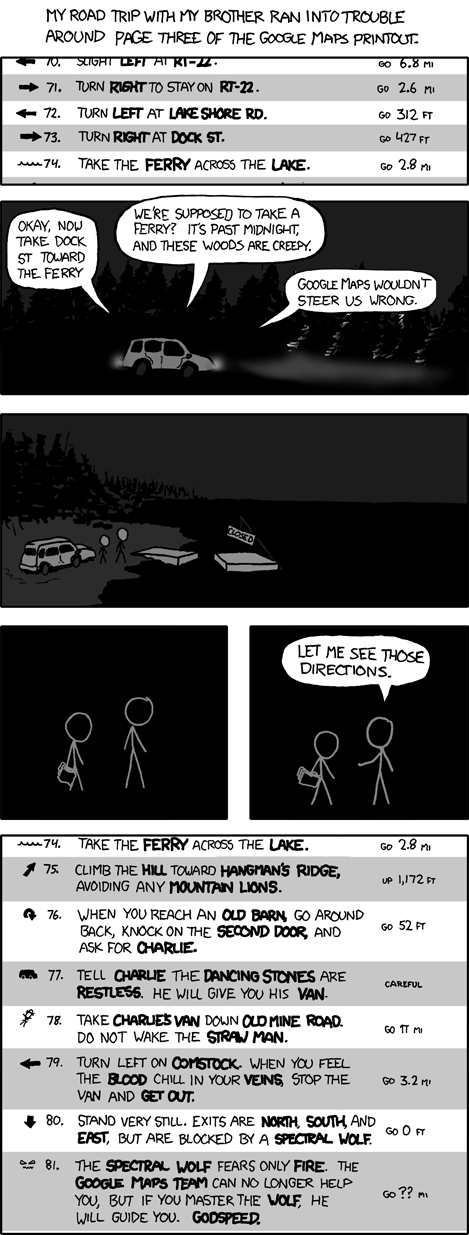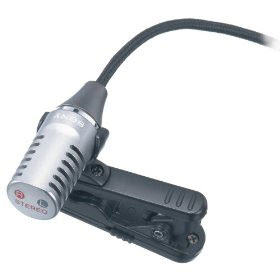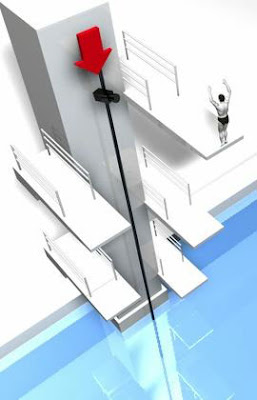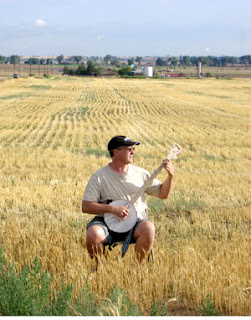
Source: xkcd: http://xkcd.com/461/]
Tidbits I think might be interesting to technology teachers and the tech curious.


"When you stand up there," he says, "it makes you marvel at what these athletes will do. We were thinking: What must it be like to plummet from that height? How can we capture the sensation?"
The falling camera rides a rail on the inside of the pipe. A glass strip runs along the pipe's full length; the camera takes its picture through the glass. From the diving platform to the water line, the glass is smoky. Below the line, it's clear, so the camera need not adjust its exposure as it streaks into underwater darkness.
 I once asked a class of eighth graders to re-design a school classroom. Cost was no limit. What I got was essentially 25 different versions of a home entertainment center. If I wanted to kick back and watch a movie and have a snack, I could have found the perfect design. A place to learn...not so much.
I once asked a class of eighth graders to re-design a school classroom. Cost was no limit. What I got was essentially 25 different versions of a home entertainment center. If I wanted to kick back and watch a movie and have a snack, I could have found the perfect design. A place to learn...not so much.
The single most important factor in any classroom is the teacher.This is a humbling and an empowering belief on my part. It is also handy to chant when you are short on supplies, desks or half your computers have crashed.

Of course, teachers don't need to wait for districts to create formal opportunities for professional growth. "Find someone to learn with, a study group or buddy in your own building or in another school," Conery says. "Take a unit you love and talk about how you can infuse technology to enhance learning and go even deeper."
It's not about the stuff," Carleton emphasizes. "It's about making connections and working with what you already have.
 One last idea from the Videomaker Conference I recently attended. This technique was discussed in a session on Editing the first day and then we got a chance to try it out during the Premiere workshop the following day.
One last idea from the Videomaker Conference I recently attended. This technique was discussed in a session on Editing the first day and then we got a chance to try it out during the Premiere workshop the following day.

What if the U.S. won no gold, no silver and no bronze medals? Even worse, what if the U.S. team finished 25th in the medal competition – way behind both smaller and larger countries? Would we handle it with the same nonchalance we have about our children ranking 25th in the world in mathematics? Would it merit a Blue Ribbon panel whose recommendations are never implemented? Would it generate a brief mention in the news and then pass from our minds?Hmmmmm? I don't think we would take it very well.

"The bigger your light source the softer the shadow.
The smaller your light source the harder the shadow."

“One morning I shot an elephant in my pajamas. How he got into my pajamas I'll never know.”
“If you've heard this story before, don't stop me, because I'd like to hear it again.”
“I was going to thrash them within an inch of their lives, but I didn't have a tape measure”
“If I held you any closer I would be on the other side of you.”
“I find television very educating. Every time somebody turns on the set, I go into the other room and read a book.”




At the highest level, they are looking for non-routine problem-solving abilities.They want people with the following skills: analytical reasoning, communication skills, a willingness to experiment, team players, passion and leadership.
It's easy to educate for the routine, and hard to educate for the novel. Keep in mind that many required skills will change: developers today code in something called Python, but when I was in school C was all the rage. The need for reasoning, though, remains constant, so we believe in taking the most challenging courses in core disciplines: math, sciences, humanities.Point your students to this page when they ask what classes they should take. (Maybe your school counselors too.)
And then keep on challenging yourself, because learning doesn't end with graduation.